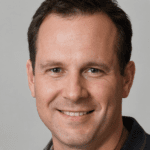The Difference Between AR and VR
As anyone paying attention to tech development trends over the last couple of years already know, both virtual and augmented realities are becoming increasingly common. Developers from all around the world are perfecting and improving immersive user experiences for all kinds of purposes. From the gaming and entertainment industries to retail businesses, these digital realities are gaining more traction and popular recognition.
As they do so, people are starting to divide in front of them. There’s a group that chooses to focus on the uses and benefits that working with both VR and AR can bring to the table. But there’s also a considerable group that, though acknowledging those benefits, are warning about the impact these alternate realities might have on their user’s psychology and behavior.
Though there aren’t conclusive investigations to go with either one of them, both have some strong cases about virtual and augmented reality. Thus, we need to take a detailed look into what both groups are saying to really understand this complex topic.
But first, let’s review what we are talking about when we talk about virtual reality and augmented reality:
- Virtual reality (VR) is a simulated experience that may or may not be similar to the real world. VR creates an immersive digital world where the user can look around, move and interact with different elements. All of this is done through a virtual reality system or headset that provides the necessary representation right in front of the eyes of the user.
- Augmented reality (AR) is an interactive experience of a real-world scenario where real objects are enhanced by computer-generated layers of information. Those layers can be constructive (i.e. be added to the environment) or destructive (i.e. replace or mask the natural environment). Some kinds of hardware (such as glasses or smartphones) are used to view the real world and are the ones in charge of adding or masking the digital layers.
The difference between them, then, is that while VR offers a completely simulated world to the user’s eyes, AR adds touches of information to the real world. Now that you know the real difference between both realities, it’s time to delve into the perceived benefits and cons of using these realities across different industries.
Potential uses and benefits of VR and AR
The advocates for both VR and AR base their opinion on the huge amount of potential uses both technologies can have, especially the ones beyond mere entertainment. Though most people know both of them through video games and entertainment services like the 3D cinema, there are other reasons that seem to justify their use.
AR has a huge potential to change educational settings by bringing supplementary information to complement regular educational material. Thus, AR can become the foundation for a new educational experience, where students stop being passive recipients to turn into active agents that can interact with different scenarios through digital triggers that can add further information to what they are studying.
VR also can be used educationally. Developers can create virtual field trips and simulate different experiences for lessons. In fact, there are companies that are already offering this kind of services, with Google leading the way with Expeditions, an app that can take students on field trips through smartphones and headsets.
As if that wasn’t enough, VR can also be used to train workers across a number of industries, especially in areas where there might be consequences when failing in traditional training courses. Examples for this include military and astronaut training as well as flight simulation and healthcare training. As you can see, traditional “real-world” training has to be more careful as a failed training exercise can result in serious consequences for the user or for others. With VR, the training space is as safe as it gets.
Additionally, AR was already used to aid archaeological research by formulating possible site configurations from extant structures such as ruins, landscapes, and even ancient people. AR has also proven to be very helpful for underwater archeology through the creation of 3D models that facilitate the manipulation of underwater artifacts.
Finally, there are the psychological uses for both VR and AR. In other words, people in favor of using these technologies and researchers are seeing a psychological impact of both. Thus, VR and AR can be used in exposure therapy to treat anxiety disorders, phobias, and addictions, among other things. This has led to the rise of cybertherapy, a branch of psychology that uses these technologies to induce clinical changes.
By providing visual stimuli through virtually generated spaces and digitally augmented scenarios, cybertherapy allows the patient to engage in traumatic experiences in a safe manner. Through the use of VR and AR, patients enter mediated environments and expose themselves to certain problematic situations. This allows professionals to study reactions and gather feedback that can lead to better treatment paths.
Presented in this way, it almost seems as if VR and AR should be more popular than they are today since they both provide interesting uses that can be extremely beneficial for lots of industries. Yet, there are challenges and issues with their implementation you should also know about.
The negative impact of VR and AR
No analysis would be complete without the opinion of numerous researchers that ask for caution when using AR and VR in different industries. That’s because they see that both AR and VR have undeniable effects on a neurological level that can bring consequences on an individual and societal level. They argue that taking these effects into account is a must to responsibly use both technologies.
The negative effects of these technologies can be divided into 3 groups:
- Physical effects: if you’ve ever used a VR headset, then you might be seeing where this is going – VR is known to cause dizziness, seizures, eye fatigue, discomfort, repetitive stress injuries, and real-world falls and collisions. For its part, AR causes its users to become unaware of their surroundings and their potential dangers. There’s the infamous case of the popular Pokemon Go, an AR-based mobile game where players had to wander about different locations to catch little animated figures to add to their collection. In their frenzy to get them all, players caused car crashes, personal injuries and even fatalities in the PokeStops, locations where these figures could be found.
- Psychological effects: much in the very same way AR and VR are helping psychology in its treatments, there are also several undesirable psychological effects that happen to most of its users, even casual ones. These technologies engage with the sympathetic nervous system responsible for priming the body for action, particularly in situations threatening survival. This basically means that AR and VR tamper with our fight or flight response mechanism. In other words, our brains see the simulated and augmented worlds in the same way as the real world, which can have unwanted effects, such as perceiving avatars as real people or real physical threats or creating stressful situations that can lead to the appearance of PTSD.
- Societal effects: finally, both AR and VR present certain challenges on a societal level. For instance, there are privacy concerns, especially those surrounding the potential gathering of personal information of their users (data such as actions, movements, and responses that could be used for mass surveillance). There’s also the privacy violations that may occur when using AR in public spaces since AR devices could end up recording private actions or information about people and places without their consent. Finally, there’s a philosophical issue that’s also worth looking into – the way these alternative reality techniques will be developed to influence behavior, communication, and cognition. This is an issue that can’t be overlooked since the uncontrolled parties can’t be the ones deciding the boundaries of technologies with all these proven effects.
Getting Used to VR and AR
Both virtual reality and augmented reality are impressive technological achievements that we’ll have to get used to. Since their market is expected to blow up from $16 billion in 2019 to a whopping $160 billion in 2023, we are nearer to a future where these technologies will be an everyday thing. That’s why it’s worth taking a look at the implications they both have in how we understand the world around us – and the world they create for us.
While no one can argue that there are several uses that can greatly benefit us all (especially in the educational and healthcare industries), there are physical, psychological and societal effects we can’t ignore. The development of such powerful technologies can’t come to the expense of human health, liberties, or rights. The need for more research that investigates these effects in detail is paramount and the entire VR and AR development industries should be pushing for it.







